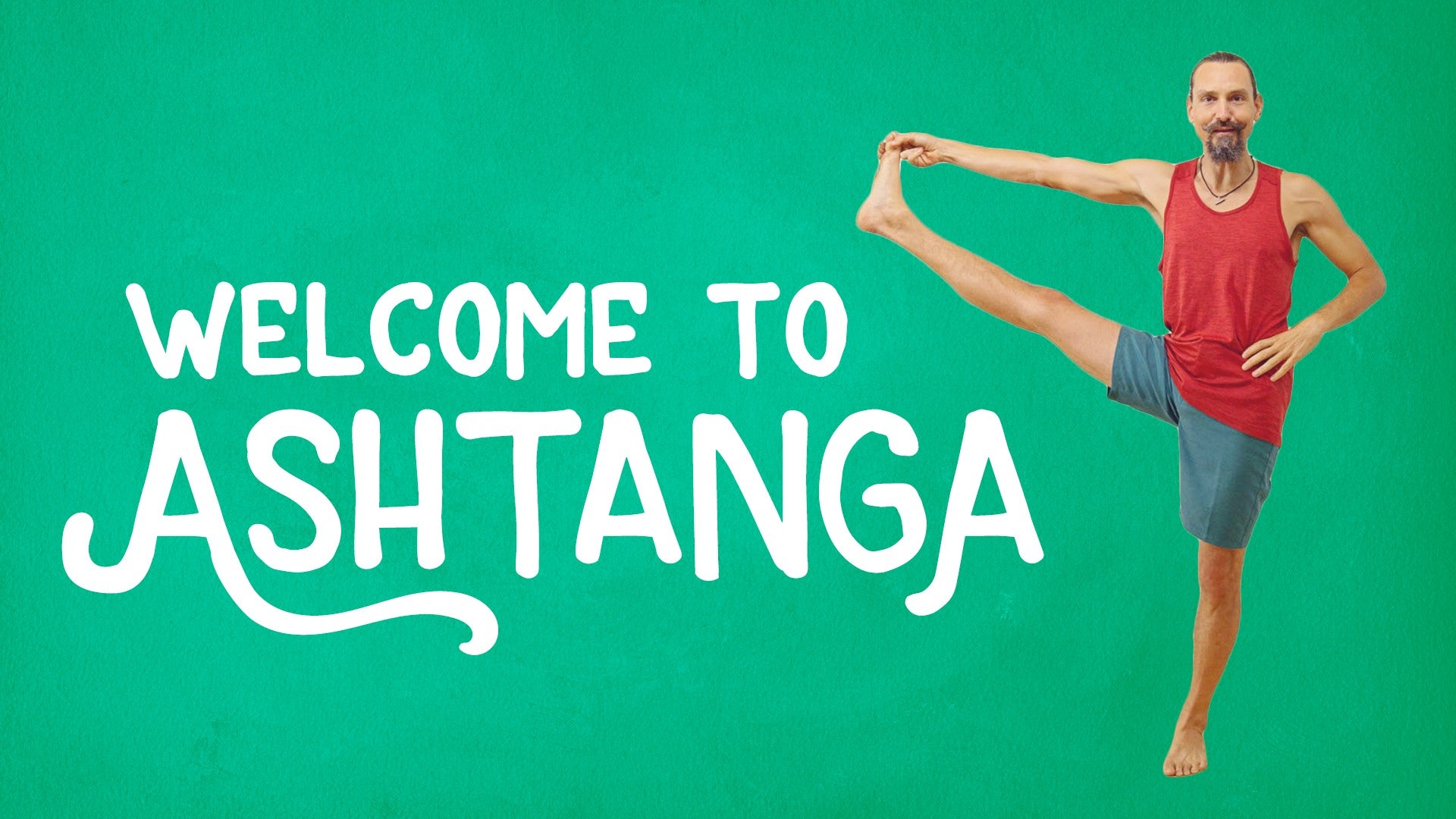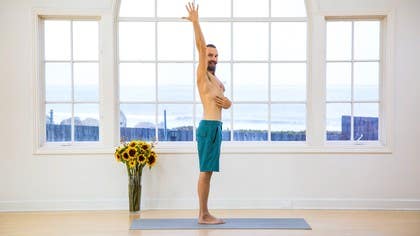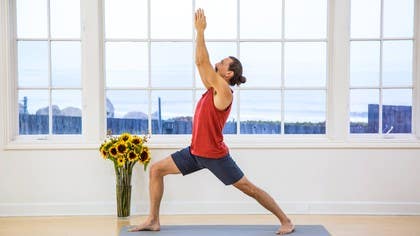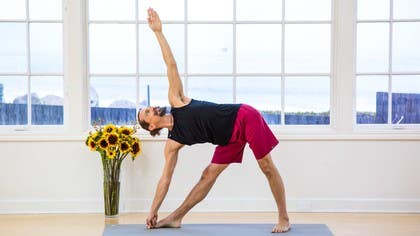Description
About This Video
Transcript
Read Full Transcript
Welcome. Part of the great highest benefits of doing a daily and traditional Ashtanga practice is that it can grant you access to a more meditative mind. By repeating the same practice day in and day out, the mind may no longer need to question what's next and find a deep, deep stability. With that said, part of the shadow side to that is that doing a repetitive practice on the physical body might cause wear and tear upon delicate structures. So of course, proceeding with anatomical awareness, making sure that you're moving inside the breath and using proper technique can really help you avoid any future suffering that comes. One common injury site is at the front and top of the shoulder, and it's a region that can be aggravated by improper technique. But we can find some very simple ways to let you experience great comfort and space there. In short, space is at a premium. There are lots of intersecting tendons and bursa and anatomical structures that can cause pinching. But if you've practiced with me before here on yoga anytime or in person, you know I'm always preaching and on about a broad collarbone experience. So what I mean by that is being able to access the space at that critical junction and making sure that you're safe through refined technique of keeping the shoulders wrapped back and down, and perhaps even feeling like the tip of the shoulder blade wraps around a little. This technique is really important throughout all your practice, especially when you do any hand balance or your old friend Chaturanga Dandasana. And of course, you can refine that technique in Samastitihi where you can refine all your techniques. So you should be able to find that neutral positioning with plenty of space through the broad collarbone experience in your Samastitihi, of course, keeping the shoulders feeling rolled back and down. And as well, you should be able to take that with you into Chaturanga. Ideally your Chaturanga Dandasana should be just like Samastitihi only with a 90 degree bend at the elbows. Now notice 90 degrees means that my forearms are way down by my hips. Some of us think we're at 90 degrees, but in fact the hands are beneath the shoulders. In a nice sustained and sustainable Chaturanga, the tailbone will be pointing down just like Samastitihi. Uriyana Bandha is active and the shoulders are rolled back and down. The broad collarbones are available to you. What I'm more worried about would be a tipping of the tailbone out to which would move more weight forward into the shoulders. And you might find a loss of space as the shoulders start to creep forward and down, hinging onto the ligaments and pinching those critical structures. Let me show you what I mean. Ideally, Chaturanga happening just like Samastitihi with the tailbone down, the belly drawing in, and the collarbones broad, ideally the forearms about 90 degrees. This kind of tipping forward worries me, and I start to see in practitioners a real loss of space as they just hang in their ligaments. So from any Chaturanga, make sure that the chest is still lifted, the tailbone rolls down, and that there's that broad collarbone experience available to you.
So to do a great Chaturanga, you're going to have to learn to stabilize your shoulder blades on the back of the ribs. To do that properly, we'll have to find access to very small, very deep, and very subtle muscles. So this sounds like a very difficult and delicate journey, but in fact, there's going to be some easy ways for us to access those small muscles. One thing to note is that as we raise the elbow above the head, we always have a choice about what muscles will govern that action most completely. So as we raise the elbows above the head and Ekam, for instance, starting a sun salutation, you might be able to see my shoulder blades do what's called upward rotation. The bottom tips of the shoulder blades move out to the side. That's completely natural, normal. That's what we want to have happen. But there's two sets of muscles that govern how that feels when it happens. If we're to use the more obvious, the gross, the surface muscle, upper trapezius to do that, we might find painful and pinching and a loss of space. And you'll be able to see this readily as I do the incorrect version, elevating the shoulder blades, lifting the shoulders towards the ears, raising the arms up and feeling that there's tight and tense upper trapezius and a lack of space between the ear and shoulder. Now, if I could access more subtle muscles, like using serratus anterior, which we will explain, then as I raise the arms up, I might feel that the smaller musculature has allowed the shoulder blades to stay back and down. And now look at how much space I have between the ear and shoulder. So how to access those subtle muscles? Well, good news. It's actually quite easy. All we have to remember is that anytime that the elbow comes above the head, anytime we're lifting the arm to take the tricep area and roll it forward towards the face.
So feel that there's a rotation or a sweeping. You may feel like your pinkies sweep together at first. And then the hands, of course, can meet all the way, but you've still got that rotation of the upper arm, the tricep moving forward towards the face. And as you do that, upper trapezius will be asked to relax and stay out of the lifting action as serratus anterior takes over, giving you that nonviolent and sustainable lift. We are really used to finding muscles that are close to the surface and govern movement. But as your practice deepens, so will your awareness. And on the physical level, you'll be able to be aware of muscles and actions that are happening much more deeply in the body. Serratus anterior is a muscle most people cannot find and are not familiar with, but I want to show you where it is. So to most easily show you, I'll lie down on my back. And I'll put the arm above the head. And you can follow along at home after I've done it, or you can look on your own, reaching the fingertips in the area underneath my armpit, just around the corner from the ribs. All the fingers of serratus anterior will attach to the ribs. So if I'm doing external rotation of the of the upper arm, it's going to flare up serratus anterior as it engages. And here we'll see as I wrap the tricep forward towards the face, you should be able to see that area engaging. So it is very subtle, but with time, you'll be able to find it on your own. And again, it's not that you need to know exactly where it is on your own body. For now, it will be enough to simply wrap the tricep area forward to the face, keeping that rotation and finding that there's some deep engagement as the shoulder blade finds itself stabilizing on the back of the ribs. Now let's see how that plays out in postures that you're commonly doing, like let's start with downward facing dog. Here in downward dog, you will realize the elbows higher than the head, the arms are lifted. So of course, you could do a crunching way losing that space, but we're going to avoid that by wrapping the tricep area forward to the face and trying to find that there's space between the ear and shoulder. If it's difficult for you to feel that action, maybe you bend the elbows and then feel the elbows move towards the mat a little. Notice I'm still grounding through the index mound of my hand. My hands haven't rolled off the mat. Still good grounding, but keeping that rotation should allow you to feel the inside eye of the elbow pointing forward a little so that you have that space between the ear and shoulder. You'll also see that this plays out in Parsvakonasana. So I'm stepping my left foot forward so that you can see the back side of my neck and shoulders. My left hand is down and we're going to focus on the right arm that's lifted. Again, taking the tricep area, rolling it forward to the face so that you feel the shoulder blade moving down the back and that space occurring. If I was just trying to extend my arm as high as I could, I might lose that priority and lose the space. But instead, keeping the tricep rolling forward allows me that sustainable shoulder blade positioning. And this, of course, will come out as well during standing postures, including Utkatasana. With your knees bent and knees together, your temptation might be on sustaining the strength through the lower body, so you might lose that ability through the upper body. But don't worry, you could bring the hands down, wrap the tricep area forward to the face, and then as the hands join together, lift them only as high as you can, keeping that space between the ear and shoulder. Great. So there are so many times where you'll find that ability and that challenge and your awareness to wrap the tricep area forward, all the while to keep that broad collarbone experience, keeping your shoulders in great position, taking care of your body so that you can take care of your daily practice. And with sustainable success, allow yourself access to that clear and meditative mind that the Ashtanga practice may offer to you.
Welcome to Ashtanga
Comments
You need to be a subscriber to post a comment.
Please Log In or Create an Account to start your free trial.

















